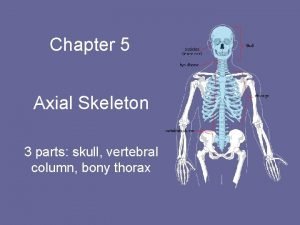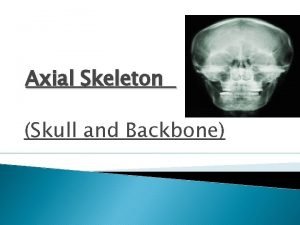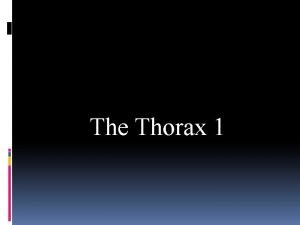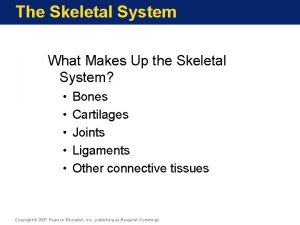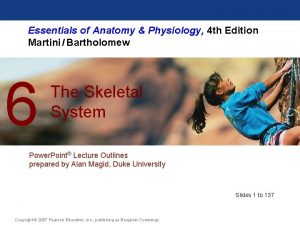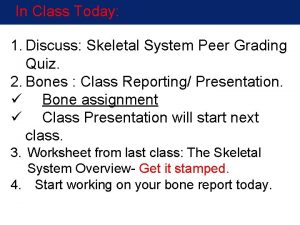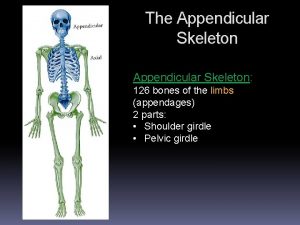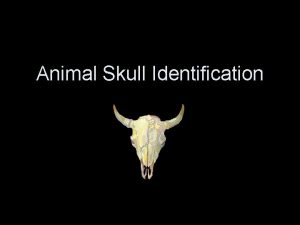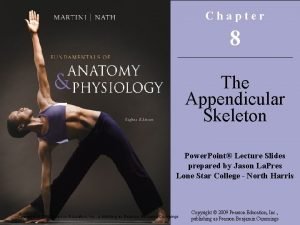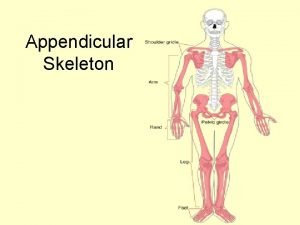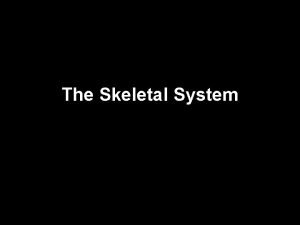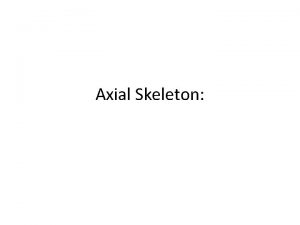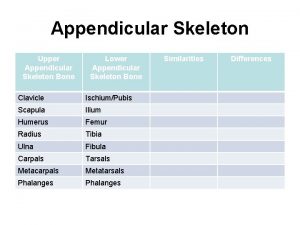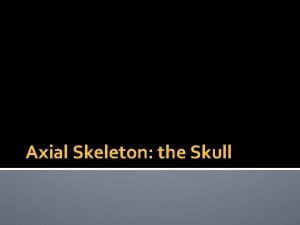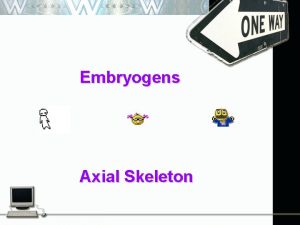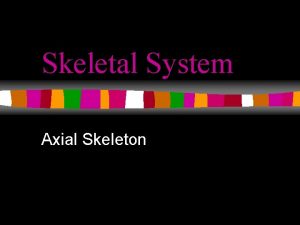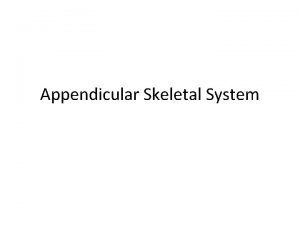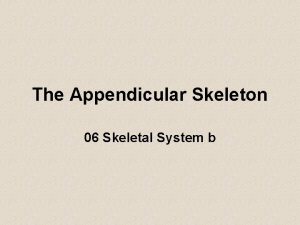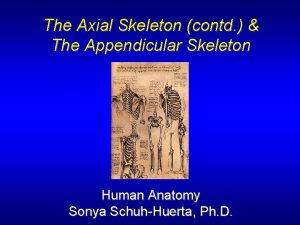Human Skeletal System Axial Skeleton Skull Appendicular Skeleton













- Slides: 13

Human Skeletal System Axial Skeleton ÞSkull Appendicular Skeleton => Pectoral Girdle & Upper Limbs (31 bones/structures) ÞVertebral Column (11 bones/structures) (44 bones/structures) => Pelvic Girdle & Lower Limbs (36 bones/structures) ÞThorax Þ(8 bones/structures) Total = 130 bones/markings that you are required to know There is a total of 206 bones in the human skeleton

Body Framework I. Functions of Bone A. Support B. Movement – due to articulations (joints) C. Storage – Ca and P D. Blood Cell Production (rbc, wbc) E. Protection – of internal organs, brain, spinal cord F. Leverage/Site of muscle attachment

II. Major Features of Bone (Long Bones; Tibia, Femur) A. Epiphysis - “head” or expanded ends of long bones - - contains spongy (or cancellous) bone - - Trabeculae - struts, plates in spongy bone

Normal Trabeculae with Osteoporosis

B. Diaphysis - tubular shaft of long bones - made of compact bone; provides strength

C. Medullary canal (cavity) – Marrow cavity in diaphysis 1. Red Marrow - production of blood cells - found in spongy bone of vertebrae, ribs, breastbone, long bones 2. Yellow Marrow - found in center of long bones - made of adipose and connective tissue

D. Endosteum - cellular lining of marrow cavity, connective tissue E. Periosteum - outer surface of bone; made of tough connective tissue - Contains osteoblasts: form Osteocytes

III. Bone Shapes and Sizes A. Long Bones – Longer than they are wide Ex. Femur, Humerus, Tibia, Fibula, Radius, Ulna B. Short Bones – About as broad as they are long Ex. Carpals, Tarsals C. Flat Bones – Thin, parallel surfaces of compact bone with spongy bone in between Ex. Roof of skull, Sternum, Ribs, Scapula

D. Irregular Bones – complex shapes; short, flat, notched, ridged surfaces Ex. Vertebrae E. Sesamoid Bones - small, round, flat bones; usually near knee, hands, and feet Ex. Patella

IV. Bone Markings – surfaces of bones are not smooth A. Process - bump, projecting portion of bone B. Fossa – depression (hole that doesn’t go all the way through) C. Foramen - hole D. Condyle - rounded process (bump) at bone articulation

E. Epicondyle - raised area or bump on condyle F. Crest - narrow ridge, ex. Iliac crest G. Spine - sharp, slender process H. Sinus - hollow or cavity inside bone I. Sulcus - groove

J. Head and Neck - found in ball and socket joint 1. 1. Head - ball part 2. 2. Neck - supports ball

V. The skeleton is often divided into 2 major divisions A. Axial Skeleton – includes skull, vertebral column, bones of thorax and hyoid bone B. Appendicular Skeleton – includes bones of upper extremeties, shoulder, lower extremities, and pelvis
 Chapter 5 skeletal system figure 5-13
Chapter 5 skeletal system figure 5-13 Receive
Receive Axial skeleton vs. appendicular skeleton
Axial skeleton vs. appendicular skeleton Appendicular vs axial
Appendicular vs axial Sternocostal angle
Sternocostal angle Difference between axial and appendicular skeleton
Difference between axial and appendicular skeleton Figure 6-4 the skeleton axial and appendicular divisions
Figure 6-4 the skeleton axial and appendicular divisions Figure 6-4 the skeleton axial and appendicular divisions
Figure 6-4 the skeleton axial and appendicular divisions Figure 6-4 the skeleton axial and appendicular divisions
Figure 6-4 the skeleton axial and appendicular divisions Figure 6-4 the skeleton axial and appendicular divisions
Figure 6-4 the skeleton axial and appendicular divisions Appendicular region
Appendicular region Herbivore vs carnivore skull
Herbivore vs carnivore skull Copyright
Copyright Male vs female skeleton pelvis
Male vs female skeleton pelvis

